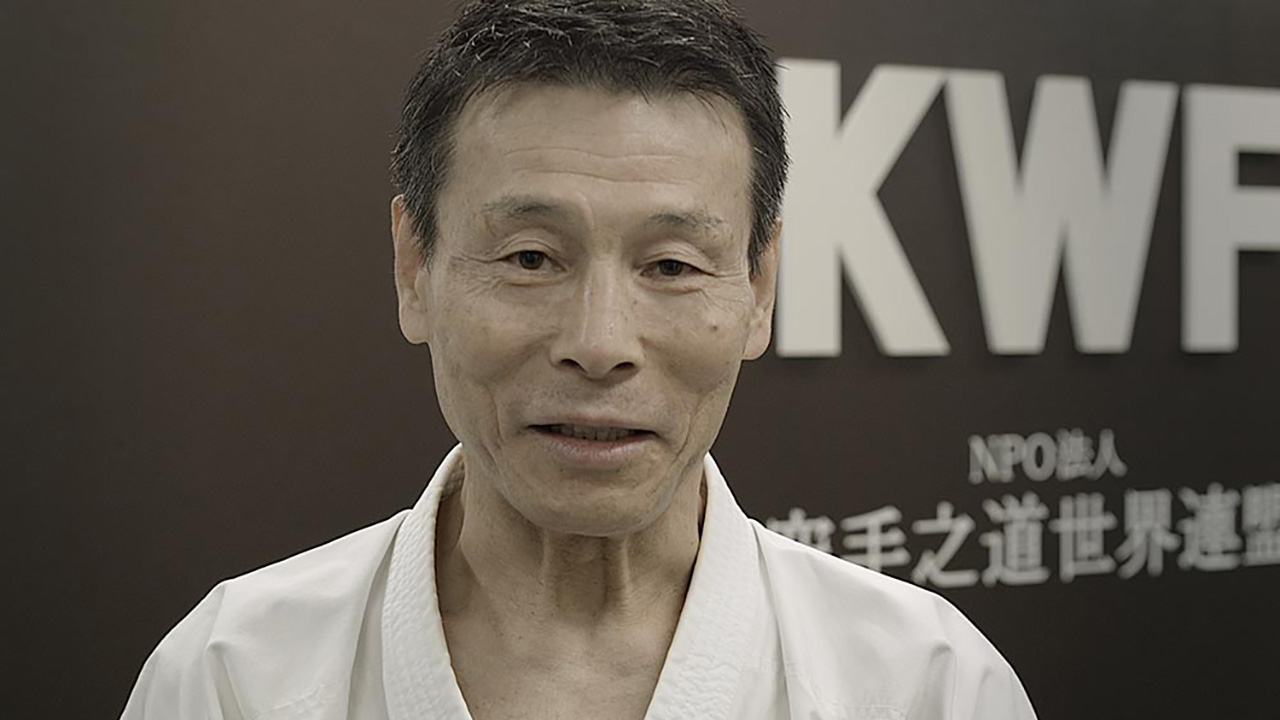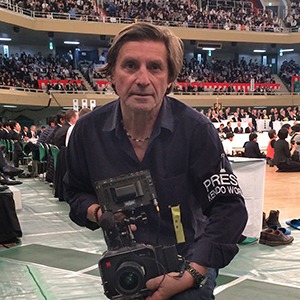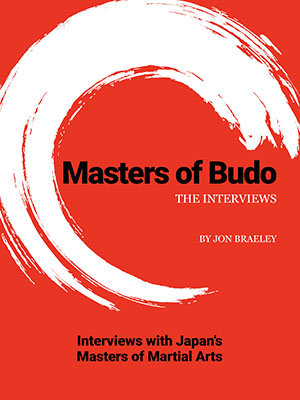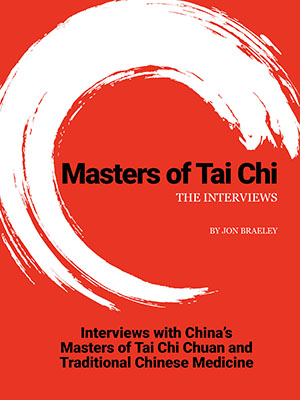The Karate Sensei Who Redefined Mastery
Mikio Yahara Sensei is one of the most accomplished Japanese Shōtōkan karate masters in the World. It is however, his ‘bad-boy’ reputation and outspokenness that has kept him in the headlines for the last three decades. The founder of World Karatenomichi Federation has never minced his words on what karate should be and his mission to spread his philosophy of a “killing blow.”
Mikio Yahara was born on March 6, 1947, in Tokyo, Japan. He began his karate training at the young age of 15, under the guidance of the leading founder of the Japan Karate Association (JKA), renowned Shotokan karate master, Nakayama Masatoshi. It was Nakayama who said of Yahara when he fought in tournaments, “Mikio Yahara is a karateka whose daredevil style of fighting in the midst of a heated contest leaves spectators breathless.” Make sure you watch the video at the end of this post.

The single most important thing for us is the single attack, we say ichigeki hissatsu or “certain kill in a single attack”
The Secrets Behind Mikio Yahara
Yahara’s unmatched karate prowess can be attributed to a combination of factors. Firstly, his relentless training regime played a crucial role in honing his skills. Yahara’s dedication and discipline are unmatched, and he demands the same level of commitment from his students. Another key aspect of Yahara’s mastery is his emphasis on the mental and spiritual aspects of karate. He believes that true mastery comes from cultivating an inner strength and the belief that he will achieve victory.
Furthermore, Yahara’s ability to adapt and innovate within the realm of karate allows him to push the boundaries of the martial art. When he founded his own school, the KWF, it allowed him to introduce training methods and techniques that challenged conventional practices. This willingness to evolve and experiment allowed him to constantly improve and stay at the forefront of karate. One major feature is the amount of power he generates, which he terms a killing blow. In his own words he says “If a technique is not strong enough, it cannot be considered Budo.” He is able to develop enormous power in his strikes though compression at the knee and rotation at the hip, while pushing his center of gravity toward the oncoming attack.

Mikio Yahara teaching his ‘bujutsu’ karate at the Tokyo hombu dojo
In our conversations it became clear that Yahara sensei is not a big fan of todays karate competitions. He says, “In a combat game that is all about getting points within a certain set of rules, speed and timing is everything.” He teaches kata as a means to find winning technique and says, “Modern people today know karate’s movement only in terms of kumite (sparring). From their point of view, kata is nonsense. They think it is a relic of the past, and this is not true. To train true bujutsu there is no other way than kata. Kata contains both knowledge of attacking and defending. I think that this is where the difference between sports and karate lie. The difference between budō and sports karate.”
Below is a short excerpt from the beginning of our interview with Yahara Sensei at his Karatenomichi hombu dojo in central Tokyo. The full length interview of Yaraha sensei and many more top Japanese martial arts masters, are available in our recently published book, Masters of Budo: The Interviews.
Mikio Yahara: Interview Part One
You use the term budō karate, can you define what you mean?
I think it is probably different depending on what one is talking about – bujutsu karate or budō karate. Budō is a process, a ‘way’ which one takes in order to reach one’s goal. Bujutsu, on the other hand is a set of skills needed to defeat an opponent. Those are the two types, with two different meanings.
The difference between what you call sports karate and with budō karate is that sports karate is a game in which fighting takes place within a set of rules in order to win points. Budō karate, as I just said before, is to defeat an adversary with a single attack in order to protect oneself. Budō karate, is to defeat an opponent with ichigeki hissatsu, meaning “certain kill in a single attack.” Budō karate is the way one trains for this purpose.
What is the difference between Karatenomichi and the JKA style that you practiced in the past?
The roots of my karate is the JKA. When I was really young, I trained a lot with JKA. Following that, I looked at the parts of karate which JKA were lacking to me. For example, the way of moving there is sports like and the sparring is like a game. I took the JKA karate and divided it more delicately into smaller parts. Dividing the body in parts and limbs like the arms, legs, and hips joints, to see how to make full use of them in order to defeat an opponent.
I think that parting from what is JKA karate and focusing it more into the direction of how to use it to defeat an opponent is the main difference between our KWF karate and the JKA.

Mikio Yahara unleashes a maigeri (front kick) with force and speed
Can you talk about the JKA Honbu Dōjō and your reputation for tough training?
I have changed since the times when I belonged to the JKA. The times have changed. In my JKA days, well in fact, ever since I was a young, I had a fixation for JKA karate and I that is why I started karate practice as soon as I could. For that sake, I moved from the Shikoku countryside to a university in Tokyo. As for my reason to come to a university in Tokyo? My real objective was not studying but rather practicing karate.
At the beginning it was a different age and daily practice was a very strict, very difficult, and very painful. Nowadays, if you just receive a little scratch it is enough motive for legal demands and other problems. Back in those days, every day I thought “I am going to die today”, or “I will die tomorrow”. I trained within that extreme state of mind. Now when I look back at those memories it is with nostalgia and I remember having fun when I was training.
So how did your bad boy reputation get started?
Well back then, for my own karate, I studied the movements of animals, especially beasts of prey. When facing an opponent, in order to defend oneself there can be no mercy. With that feeling, regardless if the opponent was a white belt or black belt, or being bigger or smaller than me, I fought them all with the same feeling. That feeling was that the opponent must be defeated.
Naturally, some people around me got injured, and from that people started saying that Yahara is a scary person, or that he is a demolisher. These kind of names were among the rumors and gossip that spread. Apparently, that is the origin of various names that people use to refer to me.
What is your philosophy behind the Shōtōkan of KWF?
Karate which we are pursuing at KWF must follow ichigeki hissatsu. What this means is that for the sake of protecting ourselves successfully, we must defeat the adversary in a single blow. If the opponent attacks and we are unable to defeat him in a single movement, then if he follows his attack we will be done for. We will be defeated.
In order to follow ichigeki hissatsu, when we are facing an opponent, we must move earnestly so we can defeat the attacker with one blow. We must develop our flesh and bones into a weapon capable of doing this. This means our whole body, the joints and the muscles, and we must exercise them with the single objective of focusing them all into a single point. If we achieve this we can produce great destructive power. This is the karate of the KWF. In other words, it is best described by ichigeki hissatsu.
Read Masters of Budo: The Interviews for complete text.
In a video clip from Warriors of Budo: Episode Two Karatedo, above, Mikio Yahara talks about the concept of “ichigeki hissatsu” – the most fundamental purpose of his karate to bring down an opponent with a single blow. He describes this as “ichi-go-ichi-e” … of being the same as a once in a lifetime encounter. In other words there can be only one chance, one instance! It is the essence of Yahara’s karate.





